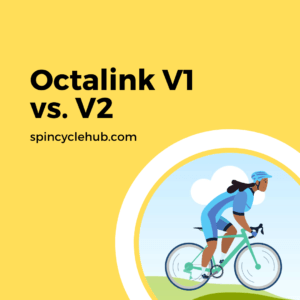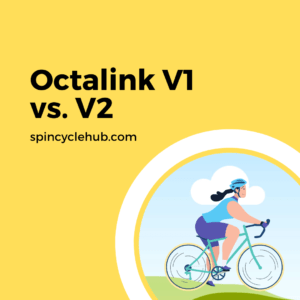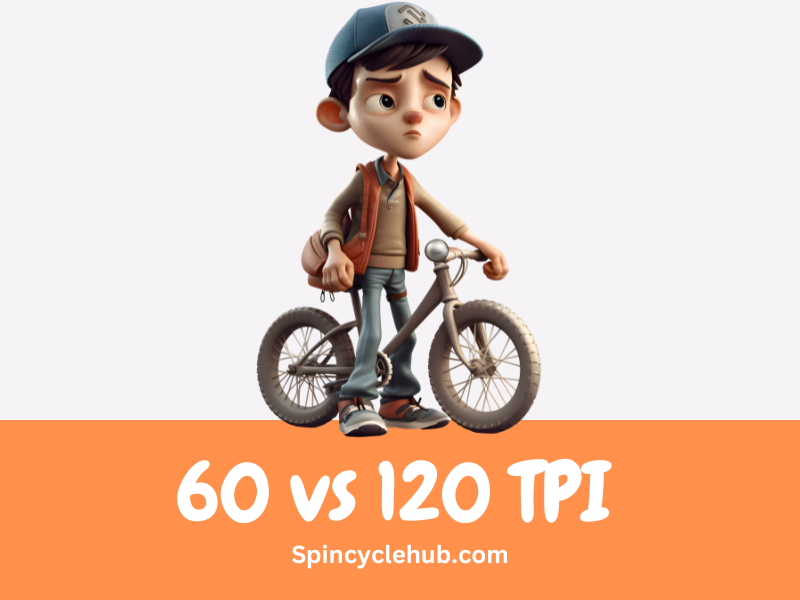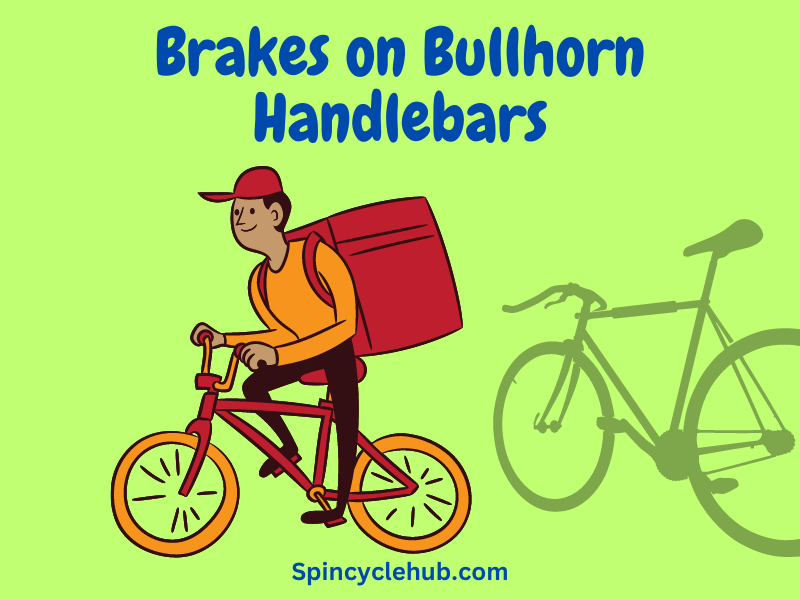Hitting the Trails with My Bike
So, picture this: a sunny Sunday morning, birds chirping, the wind gently caressing your face, and you, cruising down the scenic bike trails on your trusty two-wheeled companion. Now, you might not give it much thought, but one crucial part of your bike that keeps those pedals turning smoothly is the bottom bracket. And here’s where things get interesting – there are two versions that have sparked some debates among cycling enthusiasts: Octalink V1 and V2.
The Basics of the Bottom Bracket
Before we dive into the Octalink showdown, let’s quickly go over the basics. The bottom bracket is the component that connects your bike’s crankset to the frame. It allows the crankset to rotate freely, transferring your pedaling power to the wheels. In other words, it’s what makes your bike go!

Octalink V1 – The Trailblazer
Ah, the legendary Octalink V1, the pioneer in the world of bottom brackets. Shimano, the bike components guru, introduced this design, and it had cyclists buzzing with excitement. It featured eight splines on the crank arm, mating perfectly with the corresponding splines on the bottom bracket spindle. This innovative design promised improved power transfer and enhanced durability.
My Experience with Octalink V1
I remember the first time I upgraded my bike to Octalink V1. The smoothness of each pedal stroke was like butter melting on warm toast. The trail seemed less bumpy, and I felt an extra oomph in my riding performance. It was like my bike had leveled up, and I couldn’t get enough of it!
Octalink V2 – The Younger Sibling
While the Octalink V1 set the bar high, Shimano wasn’t one to rest on its laurels. Enter Octalink V2, the younger sibling, with some improvements over the original. V2 still had eight splines, but it boasted a sleeker and more refined appearance. The goal was to maintain the advantages of V1 while addressing some of its shortcomings.
My Experience with Octalink V2
Naturally, I couldn’t resist trying out the new Octalink V2. I got my hands on a bike equipped with this snazzy bottom bracket, and off I went on another adventure. To my surprise, the pedal strokes felt just as smooth, if not smoother, than with V1. It was like having a friendly competition with my previous setup. V2 didn’t disappoint; it impressed!
Clash of the Titans: V1 vs. V2
Alright, folks, here’s the showdown you’ve been waiting for: Octalink V1 versus V2. Let’s break it down and see how they stack up against each other.
Round 1: Compatibility
In terms of compatibility, Octalink V1 and V2 have some differences. While V1 is backward compatible, meaning you can use V1 cranksets on V2 bottom brackets, the reverse is not possible. V2 cranksets are designed exclusively for V2 bottom brackets. So, if you’re planning to mix and match, keep this in mind!
Round 2: Durability
Both versions boast excellent durability, but some riders swear by V2, claiming it can handle a bit more abuse on rough trails. However, with proper maintenance, you can expect either version to serve you well for many miles.
Round 3: Availability and Support
As the cycling industry continues to evolve, the availability of Octalink V1 components may become scarcer. V2, being the newer model, is likely to enjoy better support and easier access to spare parts. So, if you’re all about the long haul, V2 might have the upper hand here.
Choosing the Right Octalink Version
Now, the million-dollar question: which one should you choose? Well, it ultimately comes down to your riding style, preferences, and what you’re looking to get out of your biking experience. Both Octalink V1 and V2 have their merits and can elevate your pedaling game.
Go for Octalink V1 if…
– You’re on a budget and can find a good deal on V1 components.
– Backward compatibility is essential to you.
– You’ve tried it before and loved the performance.
Opt for Octalink V2 if…
– You want the latest and greatest in biking technology.
– You’re building a new bike from scratch and want the most current parts.
– You need a future-proof investment with better long-term support.

Conclusion: The Bottom Bracket Battle Settled!
So there you have it – Octalink V1 and V2, two worthy contenders in the bottom bracket arena. As a passionate cyclist, I can confidently say that whichever version you choose, you’re in for a fantastic ride. Both V1 and V2 will keep those wheels spinning and put a smile on your face, mile after mile.
FAQs – Your Burning Questions Answered
FAQ 1: Can I use Octalink V2 crankset on a bike with V1 bottom bracket?
Unfortunately, no. Octalink V2 cranksets are designed to work exclusively with V2 bottom brackets. If you’re set on upgrading, make sure to get the correct bottom bracket version.
FAQ 2: Is Octalink V1 being phased out?
While it’s not entirely phased out yet, the availability of Octalink V1 components might become scarcer as the industry moves towards newer technologies.
FAQ 3: Which version is more affordable?
As time goes on, Octalink V1 components may become more affordable due to their diminishing popularity. However, keep in mind that availability might be limited.
FAQ 4: Are Octalink bottom brackets easy to maintain?
Yes, Octalink bottom brackets are relatively easy to maintain, but like any bike component, regular cleaning and proper care will ensure optimal performance and longevity.
FAQ 5: Can I upgrade from Octalink V1 to V2?
While it’s possible to upgrade, keep in mind that you’ll need to replace both the crankset and the bottom bracket, as V1 and V2 are not interchangeable.
- Bike Manufacturer’s Website: Check out the official websites of well-known bicycle manufacturers that offer bikes equipped with Octalink V1 and V2 bottom brackets. They often provide detailed specifications and technical information about their products.
- Cycling Forums and Communities: Online cycling forums and communities can be a valuable resource to learn from real-life experiences and opinions of fellow cyclists who have used Octalink V1 and V2. Websites like Bikeforums.net or Reddit’s r/cycling are popular platforms where cyclists share their insights.
Watch this one,
Video Credits – Richard’s Bike Shop
DOWNLOAD THIS ARTICLE :Click Here
You May Also Like
-
Chain Rubs on Front Derailleur: A Biker’s Troubles and Triumphs
-
Squirt vs. Muc-Off: The Ultimate Showdown for Your Bike’s Chain!
-
TEFLON GREASE VS. LITHIUM GREASE: THE BATTLE OF THE LUBRICANTS
-
9 Speed Cassette on 11 Speed Hub: Mixing it Up for Cycling Adventures



